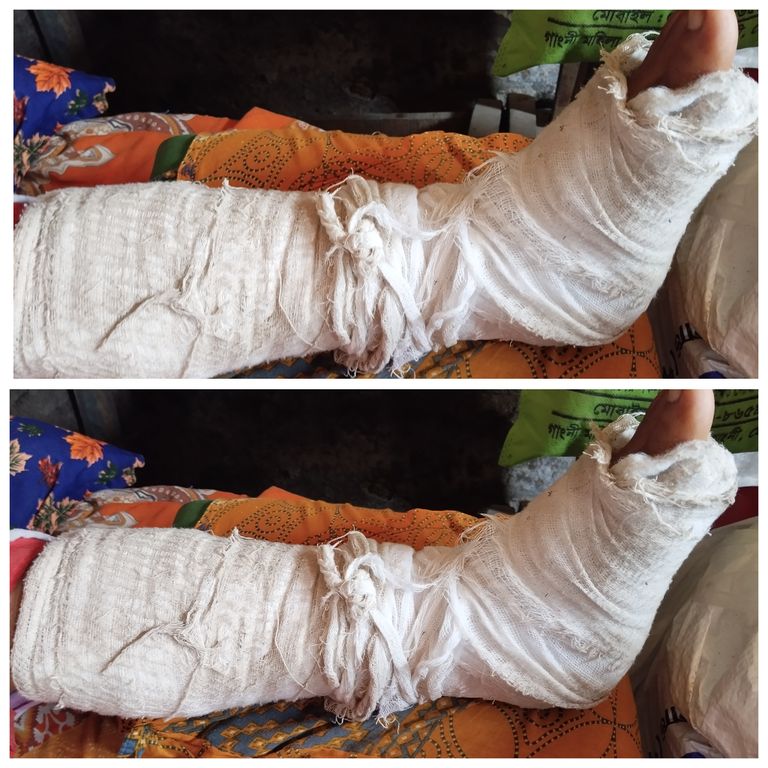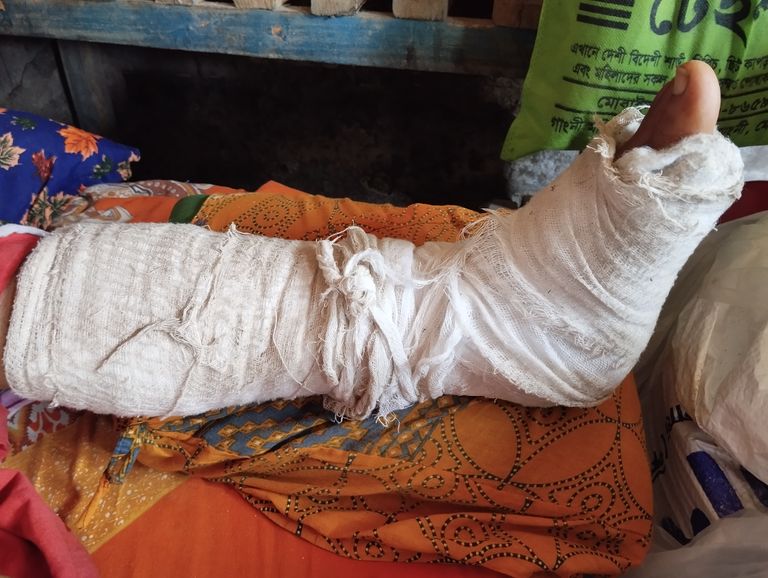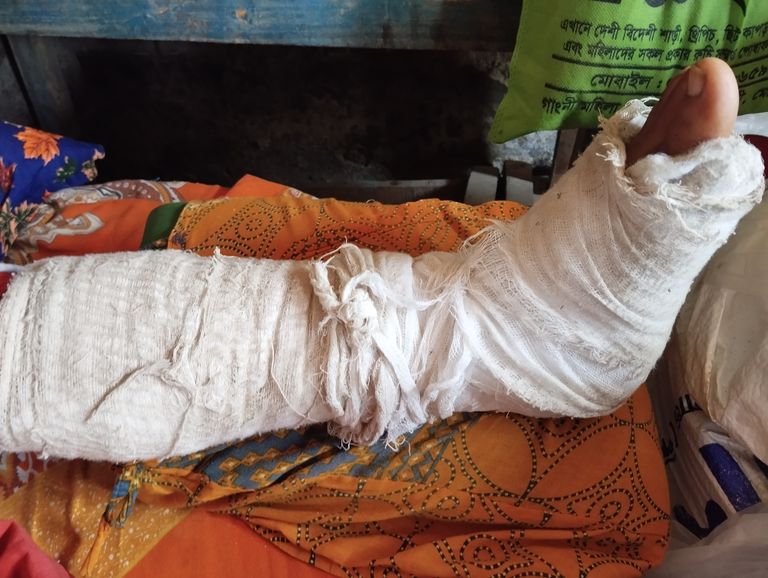
Is Bandaging Necessary for a Broken Leg?
A broken leg, or fracture, is a serious injury that requires prompt medical attention. Depending on the severity of the fracture, treatment options can vary. However, one common aspect of most treatments is the application of a bandage or cast. But is bandaging always necessary when you break your leg? In this article, we will discuss the importance of bandaging a broken leg, the types of bandages used, and the impact it has on the healing process.
Understanding the Types of Leg Fractures
Before diving into the necessity of bandaging, it's crucial to understand the types of fractures that can occur in the leg. Broadly, fractures are classified as:
- Simple (Closed) Fracture: The bone breaks but doesn't puncture the skin.
- Compound (Open) Fracture: The bone breaks and punctures the skin, often leading to a higher risk of infection.
- Hairline Fracture: A small, thin crack in the bone, often caused by repetitive stress or impact.
- Comminuted Fracture: The bone shatters into multiple pieces, usually requiring more complex medical intervention. Each type of fracture requires a different treatment approach, but for most fractures.


Remedies for Foot Pain: A Comprehensive Guide
Foot pain is a common issue that can affect anyone, regardless of age or lifestyle. Whether you’re an athlete, someone who stands for long hours, or a person who experiences occasional discomfort, foot pain can interfere with daily activities. Understanding the causes and remedies is essential for finding relief and preventing future problems. This blog will explore various types of foot pain and offer remedies, including medication, home remedies, and preventive measures.
- Understanding Foot Pain: Common Causes
There are several reasons why someone might experience foot pain. Some of the most common causes include:
Plantar Fasciitis: Inflammation of the tissue that runs along the bottom of your foot, often causing heel pain.
Arthritis: Particularly common in older adults, arthritis can cause joint inflammation and pain in the feet.
Tendinitis: Overuse or strain of the tendons in the foot can lead to painful inflammation.
Flat Feet: Lack of arch in the foot can lead to discomfort, especially after long periods of standing or walking.
Injury or Trauma: Sprains, fractures, or other injuries can cause pain that lingers long after the initial impact.
Identifying the source of your pain is crucial before considering treatment options.
- Over-the-Counter Medications for Foot Pain
Over-the-counter (OTC) medications can provide temporary relief from foot pain. Here are some options:
Nonsteroidal Anti-Inflammatory Drugs (NSAIDs): Medications like ibuprofen (Advil) and naproxen (Aleve) reduce inflammation and relieve pain. These are particularly effective for conditions like tendinitis or arthritis.
Topical Analgesics: Creams or gels that contain ingredients like menthol or capsaicin can be applied directly to the painful area. They work by numbing the area or creating a warming sensation to distract from the pain.
Epsom Salt: While not a medication, soaking your feet in warm water with Epsom salt can help reduce swelling and alleviate discomfort.
- Prescription Medications for Severe Foot Pain
For chronic or severe foot pain, a doctor may prescribe stronger medications. These include:
Corticosteroids: In cases of severe inflammation, a doctor may inject corticosteroids directly into the affected area to reduce swelling and pain.
Prescription NSAIDs: These are stronger versions of over-the-counter medications, and doctors may prescribe them for more intense pain or inflammation.
Muscle Relaxants: These can be prescribed if foot pain is caused by muscle spasms or tension.
Always consult with a healthcare professional before taking prescription medication.
- Home Remedies for Foot Pain
For mild to moderate foot pain, home remedies can be highly effective. Here are some tried-and-true methods:
Rest and Ice: Resting your feet and applying ice for 15-20 minutes every few hours can help reduce inflammation and relieve pain.
Stretching Exercises: Stretching the muscles and tendons in your feet can prevent stiffness and improve flexibility. For example, stretching the calves and Achilles tendon can alleviate heel pain.
Foot Massage: Gently massaging the painful area with your hands or using a foam roller can increase blood circulation and reduce muscle tightness.
Elevation: Keeping your foot elevated, especially if it's swollen, helps reduce fluid retention and improves blood flow.
- Lifestyle Changes to Prevent Foot Pain
Preventing foot pain is just as important as treating it. Consider these lifestyle adjustments to keep your feet healthy and pain-free:
Proper Footwear: Wearing shoes that offer adequate support and cushioning is crucial. Avoid high heels or shoes that pinch the toes, as they can exacerbate foot problems.
Orthotic Inserts: If you have flat feet or high arches, custom orthotic inserts can provide extra support and alignment, reducing strain on your feet.
Weight Management: Excess weight can put additional pressure on your feet, leading to pain. Maintaining a healthy weight helps reduce the risk of foot problems.
Foot Strengthening Exercises: Strengthening the muscles in your feet can improve stability and prevent injuries. Simple exercises like picking up small objects with your toes or performing heel raises can make a significant difference.
- When to See a Doctor
Not all foot pain can be resolved with home remedies or OTC medications. If you experience any of the following symptoms, it's time to consult a healthcare professional:
Severe pain that doesn’t improve with rest or medication
Swelling, redness, or warmth in the foot, which could indicate an infection
Persistent pain that lasts for more than a few weeks
Difficulty walking or bearing weight on the affected foot
- Conclusion
Foot pain, though common, doesn’t have to be a constant part of life. By understanding the causes and exploring various treatment options, you can find relief and get back to your daily activities. Whether through medication, home remedies, or lifestyle changes, taking care of your feet is an investment in your overall health and well-being.
If your foot pain persists or worsens, don’t hesitate to consult with a healthcare provider to determine the best course of treatment for your specific condition.

Causes of Foot Muscle Cramps
Foot muscle cramps, commonly referred to as "charley horses" or spasms, occur when a muscle involuntarily contracts and fails to relax. These cramps can range from mild discomfort to intense pain and can last from a few seconds to several minutes. They are particularly common in the feet, as the foot muscles are engaged constantly throughout the day, even when standing or walking. The following are the most common causes of foot muscle cramps, exploring why they happen and how you can prevent them.
- Dehydration
Dehydration is a leading cause of muscle cramps. Muscles need proper fluid levels to contract and relax efficiently. When the body is dehydrated, it can cause an imbalance in electrolytes such as sodium, potassium, calcium, and magnesium. These minerals play a crucial role in muscle function. Without adequate hydration, your muscles can become more prone to cramping, particularly during physical activity or even while resting.
Prevention: Ensure that you drink plenty of water throughout the day. If you're exercising, it's important to replenish lost fluids by consuming water or an electrolyte drink. Aim to drink at least 8-10 glasses of water daily, but this amount may increase depending on the climate or activity level.
- Electrolyte Imbalance
Electrolytes, including calcium, potassium, magnesium, and sodium, are essential for muscle contraction and relaxation. When these are depleted—either through sweating, dehydration, or poor nutrition—the muscles are more likely to cramp. Sodium helps to maintain fluid balance, while calcium and magnesium are vital for muscle function. A deficiency in any of these electrolytes can make muscle cramps more frequent and severe.
Prevention: Ensure that your diet contains enough of these essential nutrients. Potassium is found in foods like bananas, oranges, and potatoes, while calcium is present in dairy products and green leafy vegetables. Magnesium can be obtained from nuts, seeds, and whole grains.
- Overuse of Muscles
Foot cramps can often occur due to muscle fatigue or overuse, especially after intense physical activity. Activities such as running, walking long distances, or standing for extended periods can strain the muscles in the foot, causing them to cramp. If you have a physically demanding job or engage in regular high-intensity workouts without adequate rest, your muscles may become overworked, leading to spasms.
Prevention: Incorporate regular rest periods and allow your muscles time to recover between activities. Stretching exercises before and after activity can also help reduce the likelihood of cramping by improving flexibility and muscle function.
- Poor Circulation
Inadequate blood flow to the muscles is another common cause of foot cramps. If blood circulation is poor, the muscles are deprived of oxygen and essential nutrients, making them more susceptible to cramping. This issue is especially prevalent in people with conditions like diabetes, peripheral artery disease (PAD), or those who smoke.
Prevention: Improve circulation by engaging in regular cardiovascular exercises like walking, swimming, or cycling. If you smoke, consider quitting, as smoking can contribute to reduced circulation. For individuals with chronic conditions like diabetes or PAD, managing these health concerns with proper medication and lifestyle changes is crucial to reducing foot cramps.
- Inadequate Footwear
Wearing poorly fitting shoes, high heels, or shoes that lack proper arch support can cause the muscles in your feet to work harder than they should. This overexertion can lead to muscle fatigue and cramping. Additionally, people with flat feet or high arches are more prone to experiencing foot cramps due to the uneven distribution of weight across the foot.
Prevention: Invest in comfortable, well-fitting shoes that provide adequate support, especially if you spend a lot of time on your feet. If necessary, consult with a podiatrist about custom orthotics that can help correct foot imbalances and prevent cramps.
- Prolonged Immobility
Remaining in one position for an extended period, such as sitting at a desk or lying in bed, can restrict blood flow and muscle movement, leading to cramps. Immobility can cause muscles to become stiff, reducing their flexibility and making them more prone to spasms.
Prevention: Take frequent breaks to move around if you're sitting or lying down for long periods. Simple stretching or standing up periodically can keep blood flowing and muscles active, preventing stiffness and cramping.
- Nerve Compression
Nerve compression or nerve-related issues can also contribute to muscle cramps. Conditions like sciatica or spinal stenosis can cause nerves that control muscle movement to become pinched or irritated, leading to cramping sensations in the feet.
Prevention: Managing underlying conditions like sciatica is essential in preventing nerve-related cramps. Physical therapy and exercises targeting nerve health can also help alleviate pressure and reduce cramping.
- Medications
Certain medications, including diuretics, statins, and some blood pressure drugs, can contribute to muscle cramps as a side effect. Diuretics, in particular, can lead to the depletion of electrolytes, which is a significant risk factor for muscle cramping.
Prevention: If you are experiencing frequent foot cramps and suspect your medication may be the cause, consult with your healthcare provider. They may adjust your dosage or recommend alternative treatments to minimize cramping.
- Cold Temperatures
Cold environments can cause muscles to contract involuntarily, leading to cramps. When the body is exposed to cold, the blood vessels constrict, reducing circulation and making it more difficult for muscles to function properly. This is why foot cramps can often occur in cold water or during colder months.
Prevention: Keep your feet warm by wearing socks or slippers, especially in colder environments. If you're swimming, make sure the water temperature is comfortable, and consider wearing neoprene socks in cooler waters to prevent cramps.
- Pregnancy
Pregnant women are more likely to experience foot muscle cramps, particularly in the later stages of pregnancy. This is due to several factors, including changes in circulation, increased pressure on the legs and feet from weight gain, and hormonal changes that affect muscle function.
Prevention: Stretching exercises, staying hydrated, and eating a balanced diet rich in electrolytes can help reduce the frequency of foot cramps during pregnancy. Elevating the legs can also improve circulation and relieve pressure.
Conclusion
Foot muscle cramps can be painful and disruptive, but understanding their causes can help you prevent them. Ensuring that you stay hydrated, maintain a balanced diet rich in electrolytes, and avoid overuse of your muscles are key preventative measures. If cramps persist despite these efforts, it may be wise to consult a healthcare professional to rule out any underlying health conditions that could be contributing to the problem. By taking care of your body and addressing potential causes, you can reduce the likelihood of foot muscle cramps and enjoy a more comfortable, pain-free life.